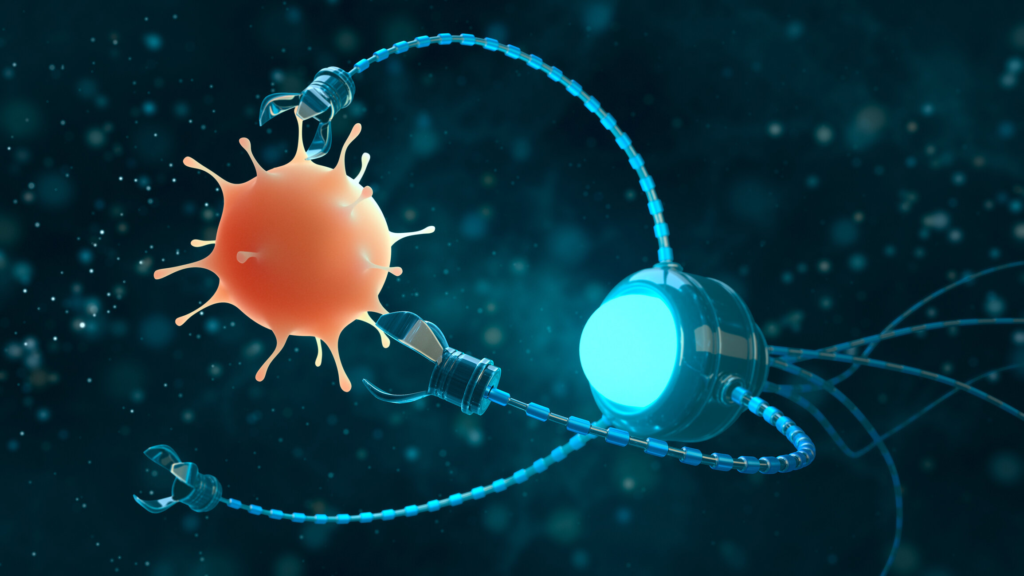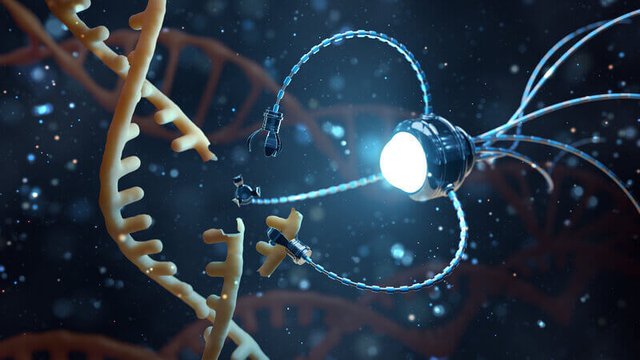Nanotechnology is a rapidly advancing field with the potential to revolutionize modern medicine. By manipulating matter at the molecular or atomic level, nanotechnology enables the creation of materials and devices with unique properties that can significantly improve medical treatments. How is nanotechnology transforming modern medicine? In this article, we’ll explore how this innovative technology is reshaping the way we diagnose, treat, and prevent diseases, offering new possibilities for healthcare and patient care.
1. Targeted Drug Delivery
One of the most significant advancements of nanotechnology in medicine is the development of targeted drug delivery systems. Traditional drugs often affect both healthy and diseased cells, leading to side effects. Nanoparticles, on the other hand, can be engineered to deliver drugs specifically to targeted cells or tissues, such as cancer cells.
By attaching drugs to nanoparticles, scientists can ensure that the therapeutic agents reach the right location in the body and are released in a controlled manner. This targeted approach not only increases the effectiveness of the treatment but also reduces harmful side effects, offering more precise and safer treatment options for patients.
2. Nanomedicine for Cancer Treatment
Cancer treatment has seen significant progress with the integration of nanotechnology. Nanoparticles can be used to deliver chemotherapy drugs directly to cancer cells, reducing the damage to healthy cells and enhancing the drug’s effectiveness. Furthermore, nanoparticles can be designed to target specific cancer cell receptors, allowing for more accurate and less invasive treatments.
In addition to targeted drug delivery, nanotechnology is also being used to develop nanoparticles for imaging and diagnostics. These nanoparticles can attach to cancer cells and enhance the visibility of tumors in imaging scans, enabling early detection and better monitoring of cancer progression.
3. Nanobots for Surgery and Diagnostics
The development of nanobots—tiny, microscopic robots—is revolutionizing surgery and diagnostics. These nanobots can be programmed to enter the body and perform specific tasks, such as removing clogged arteries, repairing damaged tissues, or delivering medication directly to affected areas.
In the realm of diagnostics, nanobots can be used to gather real-time data about a patient’s condition, including detecting disease biomarkers at an early stage. This ability to perform precise tasks at the cellular or molecular level holds immense potential for minimally invasive surgeries and more accurate diagnostic tools.
4. Nanotechnology in Imaging and Diagnostics

Nanotechnology is improving medical imaging and diagnostics, allowing for earlier detection and more precise monitoring of diseases. Nanoparticles can be engineered to bind to specific molecules or cells, making them visible on imaging scans, such as MRI or PET scans.
This enhanced imaging capability is particularly valuable for detecting diseases like cancer, cardiovascular diseases, and neurodegenerative conditions. By attaching nanoparticles to biomarkers specific to certain diseases, doctors can identify these conditions at an earlier, more treatable stage.
5. Improved Drug Formulations
Nanotechnology allows for the creation of nanoparticles that can improve the solubility and stability of drugs. Many drugs, especially those used in cancer treatment, have poor bioavailability, meaning they are not effectively absorbed into the bloodstream. Nanoparticles can help increase the solubility of these drugs, improving their absorption and enhancing their therapeutic effects.
Nanoparticle drug formulations also enable drugs to be delivered more efficiently and at lower doses, reducing the risk of side effects. This development could lead to the creation of more effective treatments for conditions like cancer, neurological disorders, and autoimmune diseases.
6. Regenerative Medicine
Nanotechnology plays a crucial role in regenerative medicine, where it is used to stimulate tissue repair and regeneration. Nanomaterials, such as nanofibers and nanoparticles, are being used to create scaffolds that can guide the growth of new tissue. These scaffolds can be used in the healing of wounds, bone fractures, and even in the regeneration of organs and tissues.
Nanotechnology is also being explored for use in stem cell therapy. By using nanoparticles to deliver growth factors and other signaling molecules, scientists can enhance the efficacy of stem cell treatments and promote tissue regeneration. This could lead to new treatments for a variety of injuries and degenerative diseases.
7. Advanced Wound Healing
Nanotechnology is advancing the field of wound healing by creating more effective treatments. Nanomaterials, such as nanocoatings and nanoparticles, can be used to accelerate the healing process by promoting cell regeneration and reducing inflammation.
For example, nanoparticles can be incorporated into wound dressings to deliver drugs directly to the site of injury, speeding up healing and reducing the risk of infection. These nanomaterial-based dressings are also more breathable, which enhances the healing environment for the wound.
8. Nanotechnology in Vaccine Development
Nanotechnology is playing a key role in the development of more effective vaccines. Nanoparticles can be used to deliver antigens or other immune-stimulating molecules to the body, boosting the immune response and improving the effectiveness of vaccines.
Nanoparticles are also being used to create vaccines that are more stable and easier to transport, making them more accessible to people in remote or underserved regions. Additionally, nanotechnology is being explored for DNA and mRNA vaccines, which have the potential to revolutionize vaccine development and provide immunity against a wide range of infectious diseases.
9. Nano-based Sensors for Disease Monitoring
Nano-based sensors are being developed to monitor various disease biomarkers in real-time. These sensors can detect minute changes in the body, such as the presence of specific proteins, enzymes, or genetic markers that indicate the onset of disease. By using nanoparticles in combination with sensors, doctors can continuously monitor a patient’s health and detect diseases at an early stage.
These nano-sensors are compact and can be integrated into wearable devices, enabling continuous health monitoring without the need for invasive procedures. This can lead to earlier diagnosis, better disease management, and improved patient outcomes.
10. Nanotechnology in Drug Resistance
Nanotechnology offers new approaches to overcoming drug resistance in diseases like cancer and infectious diseases. For example, nanoparticles can be engineered to bypass mechanisms that cancer cells use to resist chemotherapy drugs. These nanomaterials can also deliver drugs to cancer cells in a way that prevents resistance from developing.
In the fight against antibiotic resistance, nanotechnology is being used to develop new classes of antimicrobial agents that can target bacteria more effectively. By designing nanoparticles that can penetrate bacterial cell walls, scientists are creating more potent and resistant treatments for drug-resistant infections.
Also Read : How Does Blockchain Technology Work And What Are Its Uses?
Conclusion
Nanotechnology is revolutionizing modern medicine by enabling more targeted, efficient, and personalized treatments. From drug delivery systems and cancer treatments to regenerative medicine and advanced diagnostics, nanotechnology is paving the way for a future where healthcare is more effective and accessible. As research continues to advance, the potential of nanotechnology to transform healthcare is limitless, offering innovative solutions to some of the most pressing challenges in medicine today.





